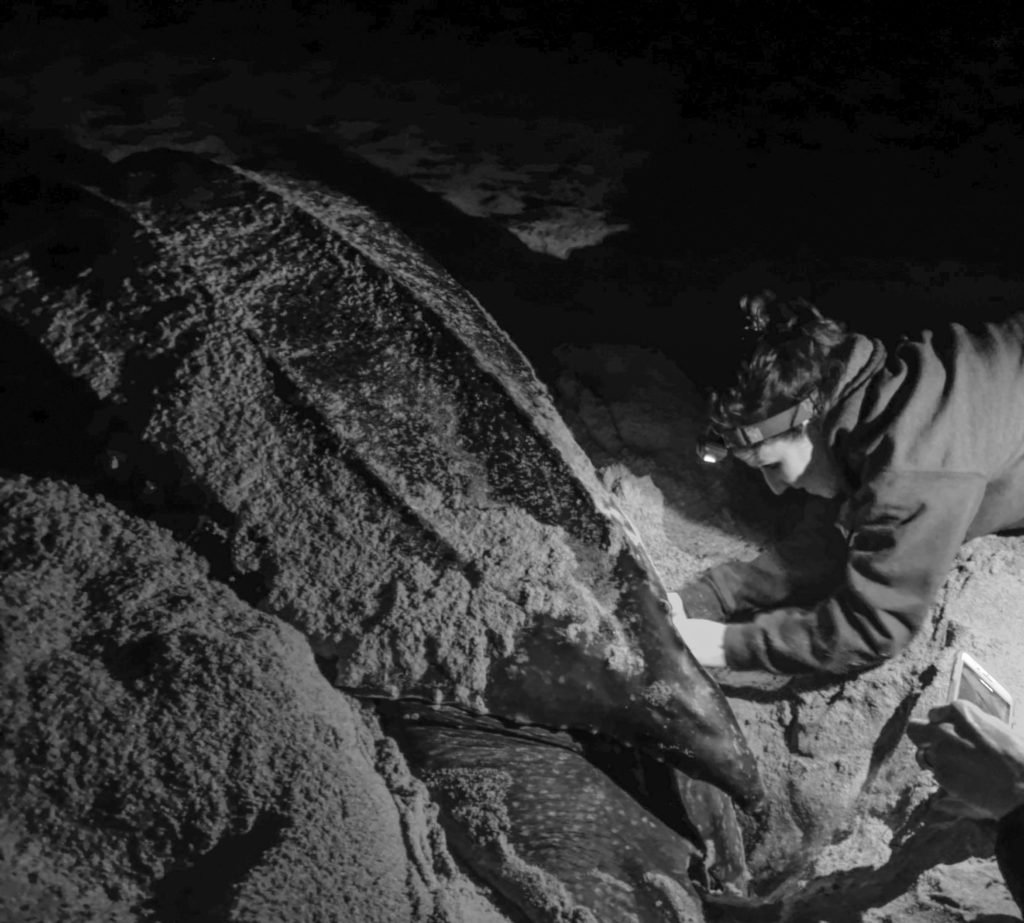Conservation and Biodiversity
Climate change threatens leatherback sea turtles
June 9, 2020
Justin Perrault, Ph.D., is the director of research at Loggerhead Marinelife Center in Juno Beach, Florida.
The ocean is a host to millions of species, many that have yet to be discovered. But climate change and environmental stressors are putting even our most recognizable ocean species at risk.
Amid our rapidly changing environment, one of our most familiar, modern-day species is struggling to survive. This crowning jewel of the sea is the endangered leatherback sea turtle.
To reverse this trend, we must rely on science and research. Surprisingly, despite sea turtles’ longtime existence, sea turtle research is still in its infancy. Today, teams of researchers are racing the clock to discover underlying threats.

One such team is located at Loggerhead Marinelife Center in Juno Beach, Florida. Since 2001, we have studied and cataloged the local leatherback population to create a year-over-year sea turtle database. In doing so, we’ve found that leatherback nests, despite rising in number between 2000–2014, have declined over the last six years.
- 2000-2004: 125 nests
- 2005-2009: 186 nests
- 2010-2014: 229 nests
- 2014-2018: 178 nests
To prevent this ongoing trend, we’re making sure no stone is left unturned to protect this valuable and telling creature. A few of the research projects within our Leatherback Project include…
- Examining stable isotopes composed of carbon and nitrogen specific to certain areas around the globe, will provide detailed information about the animals’ diet, movements and habitat use
- Analyzing microplastics in leatherback sea turtle nests
- Discovering the impacts of endocrine-disrupting chemical plasticizers, or chemicals that disrupt hormone regulation, on leatherback and reproductive success
Leatherbacks also balance our ocean ecosystems. For example, leatherbacks keep jellyfish populations in check. Additionally, leatherbacks maintain healthy coral reefs and funnel critical nutrients to our coastal dunes.
Leatherbacks and sea turtles also serve a larger purpose, shedding light on the health of our oceans. Everything that’s affecting our livelihood — from what we eat to the 50 percent of the oxygen the ocean supplies — is being foretold through our sea turtles.
Loggerhead Marinelife Center is one of the longest-running sea turtle monitoring programs in the state of Florida. And astoundingly, Palm Beach County accounts for approximately 30 percent of the leatherback nests laid in the state.
The hub of leatherback nesting is at our fingertips to study. But how we provide lifesaving work hinges on the support from people everywhere.
Help keep more leatherbacks coming on our shores: Donate to sea turtle research. Learn more at Earth Day Network’s Conservation and Biodiversity campaign.
Photos above courtesy of Loggerhead Marinelife Center. All photos have been acquired under a FWC permit with LMC.
